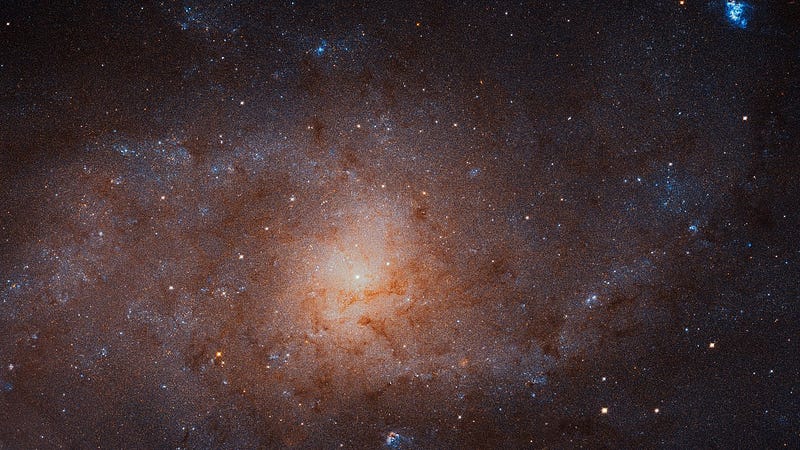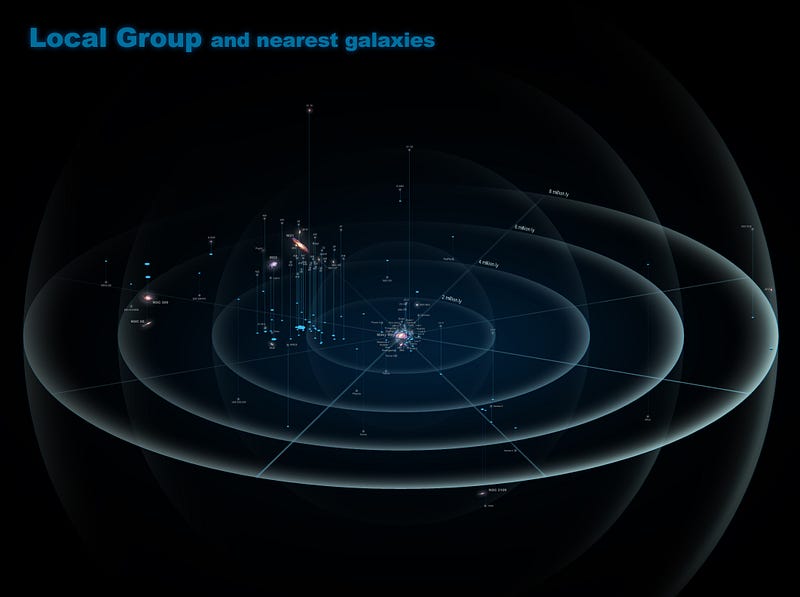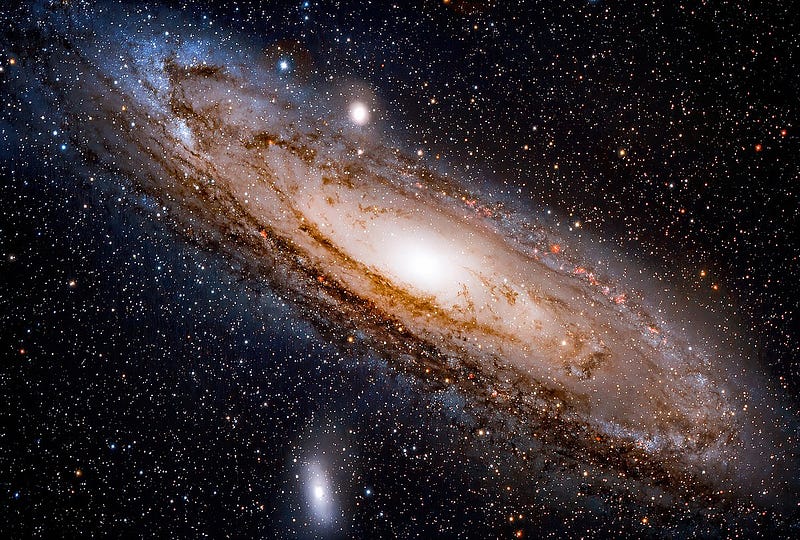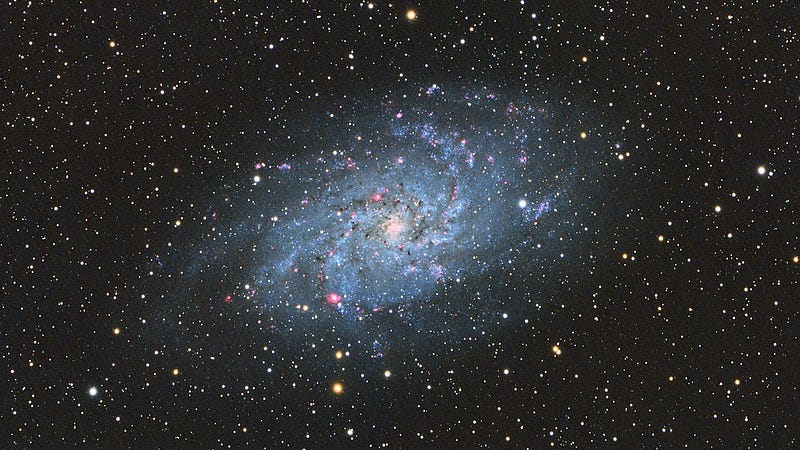The Enigmatic Beauty of the Triangulum Galaxy Unveiled
Written on
Chapter 1: The Triangulum Galaxy
The Triangulum Galaxy, also referred to as Messier 33, is a breathtaking cosmic entity. Situated just 2.9 million light-years away from Earth, it is the closest galaxy to our planet after Andromeda. This remarkable galaxy is part of the Local Group, a collection of galaxies that includes our own Milky Way.

Thanks to the Hubble Space Telescope, we can now appreciate its extraordinary beauty in great detail. Hubble’s Advanced Camera for Survey provided a stunning image compiled from 54 separate shots, revealing over 10 million stars. Under optimal conditions, the Triangulum Galaxy can even be spotted by the naked eye as a faint, fuzzy glow in the sky.
The Triangulum Galaxy, along with Andromeda and the Milky Way, forms the trio of the largest galaxies in the Local Group. While all three are spiral galaxies, the Local Group also hosts around 50 smaller, often dwarf, galaxies that orbit a shared center of mass.
Section 1.1: Historical Significance
In the early 1920s, American astronomer Edwin Hubble made a groundbreaking discovery in both the Triangulum and Andromeda galaxies. By observing faint cepheids, or pulsating stars, he was able to determine their distances, proving they resided far beyond the Milky Way. This revelation transformed our understanding of the universe, demonstrating that it comprised countless independent galaxies rather than being confined to our own.

Chapter 2: The Structure of Triangulum
The Triangulum Galaxy is oriented such that its disk is aligned with Earth, making it easier to study despite its smaller size compared to the Milky Way and Andromeda. With a diameter of approximately 60,000 light-years and an estimated 40 to 50 billion stars, it remains a fascinating subject of research.

Remarkably, Triangulum boasts the highest concentration of dynamic star-forming regions known as H II regions—luminous clouds of ionized hydrogen where new stars are born. The NGC 604 cloud, located within the galaxy, is the most prolific star-forming region in the Local Group.

Experts classify the Triangulum Galaxy as an "introvert," having avoided violent encounters with its galactic neighbors for billions of years. This peaceful existence has allowed it to maintain a structured spiral form and foster new star generations. However, it is suspected that its tranquil era may soon change, as it is a relatively young member of the Local Group.
Discover how to locate the Triangulum constellation in the night sky and appreciate the beauty of this cosmic neighbor.
Learn how the Triangulum Galaxy contributes to unraveling an ancient star mystery, enhancing our understanding of the cosmos.
Did you enjoy this exploration of the Triangulum Galaxy? Feel free to leave a comment or show your appreciation. Your support motivates me to continue sharing captivating insights. Follow for more daily articles!